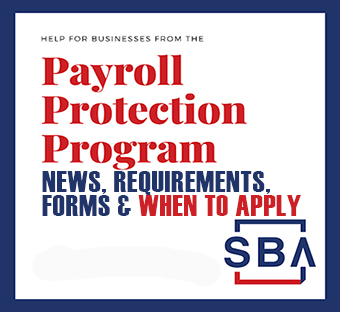
What results in FIRPTA exemptions? Many people want to know this. Before we take a look at the things that make you eligible for FIRPTA exemptions, it’s important to discuss what FIRPTA stands for and entails. FIRPTA is the abbreviation of Foreign Investment in Real Property Tax Act. The main purpose of FIRPTA is amassing the taxes due on sale of an estate owned by foreign individuals or companies who do not pay tax in the U.S.
As a buyer of a property owned by a foreign individual or company, you’re required by FIRPTA to withhold either 10 or 15% of the gross sales price. Within 20 days after closing, you need to deposit the withheld amount to the Internal Revenue Service. However, recently FIRPTA has undergone a few changes. FIRPTA requires you to withhold 15% of the gross sales price if you buy the property from a foreign seller for more than a million dollars.
- According to FIRPTA’s dictionary, a foreigner is:
- Foreign estate, entity, partnership, or trust
- Non-resident alien individual
Before we cover the criteria for FIRPTA exemptions, it’s important to find out the things that make FIRPTA affidavit necessary. This is what we’re going to discuss next.
If you need help with a FIRPTA Withholding Certificate please call us at 407-502-2400, or email us at [email protected]
What makes FIRPTA affidavit necessary?
What makes FIRPTA affidavit necessary? Any property sold in the U.S by a foreigner is subjected to income tax by FIRPTA. FIRPTA was passed to curb lost capital gain tax revenue from the property sold by foreigners. What causes FIRPTA exemptions? We’ll take a look at that as soon as we understand the things that make FIRPTA affidavit necessary.
What makes FIRPTA affidavit necessary? Even if the property is sold at a loss, the buyer is made responsible by the IRS to withhold 10% of the gross sale price. If the buyer does not withhold, he or she will held legally responsible for the tax by the IRS. At closing, a FIRPTA affidavit that states that the seller is a non-resident alien for United States income taxation purposes needs to be signed by the foreign sellers. The main objective of FIRPTA is to give legal protection to buyers.
You may be in a hurry to know what results in FIRPTA exemptions but you just need to wait a tad longer. Many a times, people are confused as to who a foreign person is and what exceptions are involved. Now, as a person who’s looking to know what results in FIRPTA exemptions, this may interest you: Sellers must be either a U.S citizen or resident alien with a green card if they want to be eligible for FIRPTA withholding exemption.
Now, it’s important for you to know what happens when FIRPTA affidavit is made available. Once the seller provides a completed FIRPTA affidavit which states that the seller isn’t a foreigner to the buyer, the latter is exempt from the withholding requirement.
One of the most common and clear FIRPA exceptions is the seller not being a foreigner. Such an exception requires the buyer to obtain an affidavit from the seller that states the seller isn’t a foreigner. Additionally, the affidavit should include:
- The name of the sellers
- The U.S address of the seller
- The ITIN or SSN number of the seller
Understanding the available FIRPTA exemptions
Here, we’re going to find out about the available FIRPTA exemptions. Many things make you eligible for FIRPTA withholding exemptions. So what are the things that result in FIRPTA exemptions? Let’s take a look. FIRPTA does not require any withholding if:
- The property is sold for or under three hundred thousand dollars
- The buyer at or prior to closing signs an affidavit that clearly puts forward the buyer’s intention to use the property for personal purposes for at least 12 months of the 24 that follow immediately after closing
- Proof that shows the seller isn’t a foreigner is provided by the seller
- The buyer receives a withholding certificate that relieves him or her from the withholding
In addition to FIRPTA exemptions state above, the time the property is vacant is excluded from the 50 percent calculation. Vacant property is excluded even if the buyer intends to build an abode on the property. Though, it’s important to note that only individual buyers are eligible for this exemption. This FIRPTA exemption cannot be availed by an estate, trust, partnership, or corporation. Additionally, the penalties of perjury require the buyer to sign an affidavit that mentions that the buyer meets the exemption requirements. Even if the seller is exempt from the 10 percent withholding, he or she needs to file a United States income tax return to report the sale and pay any income taxes due of the profit of the sale.
The total tax liability cannot be less than the required withholding amount: this is a FIRPTA requirement. As a buyer, you may apply for a withholding certificate if you wish to pay an amount less than the amount of the installment or the 10 percent withholding. IRS Form 8288-B is the withholding certificate to apply for. 90 days after the application is received, the certificate is issued to the buyer. There are many more many things related to FIRPTA exemptions that we need to discuss but before doing that we need to thoroughly understand the withholding certificate.
If you need help with a FIRPTA Withholding Certificate please call us at 407-502-2400, or email us at [email protected]
What is withholding certificate and who is eligible for it?
Let’s take a look at what withholding certificate is and who is eligible for it when it comes to FIRPTA exemptions. The maximum tax liability of the transferor cannot be less than the required withholding tax amount: this is technical requirement of the FIRPTA provisions. Often, the 10 % required withholding is much higher than the maximum tax liability.
Under such circumstances, the regulations are forced to make available a process that allows the IRS to agree an amount which is less than the required 10% withholding. You can get the IRS to agree to a lowered amount by applying for a withholding certificate. Generally, to perform this procedure, you need to send in a cautiously filled IRS Form 8288-B. The withholding certificate can be applied for by either the transferor of the transferee.
Moving on to other important information with regards to FIRPTA exemptions, let’s discuss a reduced withholding application’s last date. To get the 10% withholding reduced, you must apply to the IRS before the date of closing. If you’re unable to send in the application by the date of closing, you’ll need to pay the full 10% to the IRS. The time IRS requires to process the withholding reduction application is another important for you to know.
While there is no fixed time for processing of withholding reduction application, the applications are usually processed within 3 to 4 months after they are submitted. The timeline for remittance of the 10% or reduced withholding to the IRS is another important thing you need to know about. At closing, the 10% withholding is pulled out from the proceeds owed to the seller. If no application for reduction is submitted, the 10% withholding must be paid to IRS within 20 days after closing.
On the other hand, if an application for reduction is submitted, the 10% is withheld but the funds are maintained in escrow till the time the withholding certificate is received from the IRS. The IRS must be paid the reduced withholding within 20 days of receiving the withholding certificate. Make payments to the IRS using Forms 8288-A and 8288.
Who needs to remit the 10 percent withholding?
With regards to FIRPTA exemptions, let’s see who needs to remit the 10% withholding to the IRS. Generally, the buyer or transferee is responsible for paying the right amount at the right time to the IRS. The closing agent will not be responsible for withholding payment if they are connected with the transaction for the following purposes:
- Transferring of documents from one party to another
- Receipt or payment of fragments of the consideration
- Obtaining reports related to the condition of the real estate and title insurance
- Clerical duties including typing and copying
- Document registration
Although the closing agent usually pays the funds, the responsibility of supervising the transference of the funds to IRS falls on the buyer.
Understanding the foreign person’s role in the process
To understand FIRPTA exemptions better, let’s take a look at a foreign person’s role in the entire process. A number of non-resident foreigners want to find out whether filing a United States income tax return to report a U.S real estate sale is necessary for them even if they incur a loss and acquire a zero withholding certificate. The straightforward answer to this is yes! The acquiring of a withholding certificate does not exempt you from filing a U.S tax return to report a transaction.
Another thing most foreigners want to know is whether an ITIN is required by them to sell a U.S property. Well, as a foreigner, to sell a U.S property, you do not require an ITIN. Nonetheless, you will find acquiring an ITIN beneficial when you’re looking to sell a U.S real estate. To acquire an ITIN, in addition to the required documentation, you need to fill out and submit Form W-7 to the IRS. As a foreigner, before you apply for it, you need to prove your genuinity for requesting the ITIN. The sale of a U.S property is a genuine reason for requesting for the ITIN.
One question a significant number of people ask is if a citizen of the United States and a foreigner, for e.g. husband and wife, are joint owners of a United States property, what will be the method employed to determine the withholding amount? Well, here is the answer to that question.
Firstly, let’s suppose $900,000 is the sale price. In case a citizen of the United States and a foreigner are joint owners of a United States property, the withholding will be 10% of the actualized amount that is dispensed to the foreigner. The citizen of the United States and the foreigner are each said to own half of the real estate in case the aforementioned evidence isn’t available for the purposes of the 10% withholding.
Now, as $900,000 was our sales price, the amount of withholding would be $45000($900,000× 0.5% dispensed to foreigner× 0.1% withholding rate). Having discussed the withholding certificate in detail, we can now take a deeper look into the eligibility criteria for FIRPTA exemptions but only after we’ve taken a quick look at state withholding.
If you need help with a FIRPTA Withholding Certificate please call us at 407-502-2400, or email us at [email protected]
Understanding State withholdings
The federal withholding requirements of FIRPTA and state withholding are two different things. Citizens of some U.S states are required by the authorities to withhold an additional amount so that the taxes owed by the sellers can be covered. Even if the person making the sale is a citizen of the United States residing in the U.S, the requirement remains valid. For instance, buyers are required by the state of Florida to withhold and remit a portion of the sales price to the Franchise tax board of Florida whether they are a resident of the state or a non-resident. This amount works in the same manner as FIRPTA deposits: the person selling the property gets a refund if the tax amount withheld is more than the taxes owed.
Now that we discussed both the FIRPTA withholding and the state withholdings, it’s time for us to discuss the FIRPTA exemptions in detail. The buyers must sign an affidavit that clearly mentions that the buying price does not exceed three hundred thousand dollars and that the buyer intends to live in the property. In case the buyer chooses against signing the form, withholding must be performed. With all that discussed, it’s finally time to take a detailed look at FIRPTA exemptions.
A detailed summary of FIRPTA exemptions
To qualify for the reduced withholding rate or the personal residence exemption, either of the two, the buyer must have the intention of using the property for personal purposes for at least 12 months of the 24 that follow immediately after closing. If, as a buyer, you’re unable to meet the requirements of the tenancy, the IRS will hold you legally responsible for the difference between the amount to be withheld and the actual amount (if any) which was withheld.
It’s important for you to keep in mind that the amount that should have been withheld includes interests and penalties. Under the above-mentioned exception, as a buyer, you do not need to make this election even if the facts don’t back the reduced rate or exemption or even if you’re told by the settlement agent that neither the reduced rate nor the exemption applies automaitcally. Instead, what you need to do is make a beneficial election to do the necessary in case you choose to request for the exemption or the reduced rate. This election should be jettisoned as an affidavit by accrediting the facts qualifying the buyer and the buyer’s decision to the reduced rate or exemption.
The buyer is the person legally responsible to the IRS: this is no hidden fact. Though, the settlement agent takes over this responsibility if proper documentation and handling of the matter doesn’t take place. The gathering and distribution of funds to the IRS during closing is what creates this situation. Also, the specific written direction of the buyer should be showcased by the file if the amount withheld is more than 15% of the real estate’s sale price.
If, as a buyer, you choose to relinquish the withholding or withhold a reduced rate, the settlement agent will be required to obtain an affidavit from you that states your decision and the facts qualifying you for the reduced rate or exemption. Additionally, an acknowledgment that you’ve won the chance to obtain legal or tax advice should also be part of the affidavit. Contrary to what most people believe, FIRPTA affidavit does much more than legally bind two or more parties. You can use the affidavit to get approval for a reduced withholding rate or obtain exemption from withholding. Though, the most useful feature of the FIRPTA affidavit is its ability to protect buyers.
We’ve now discussed everything there is to know about FIRPTA exemptions. We discussed in detail what FIRPTA stands for and entails. This made it easier for us to understand the FIRPTA exemptions.
Now that we’ve discussed FIRPTA exemptions in detail, you can figure out whether or not you qualify for exemptions. If you do quality for FIRPTA exemptions, you should extract the maximum benefit out of them.
If you need help with a FIRPTA Withholding Certificate please call us at 407-502-2400, or email us at [email protected]




















Post comment
You must be logged in to post a comment.